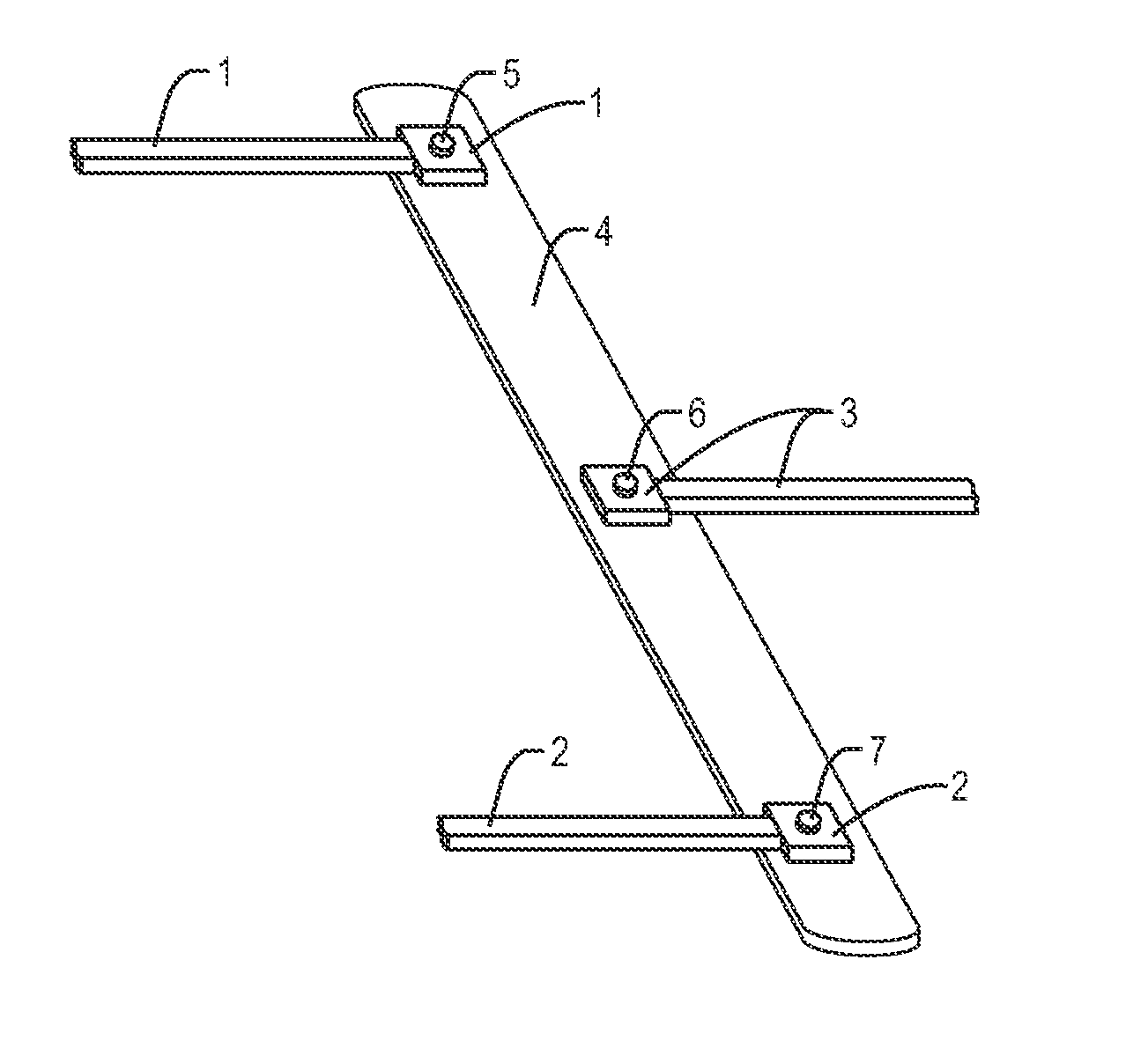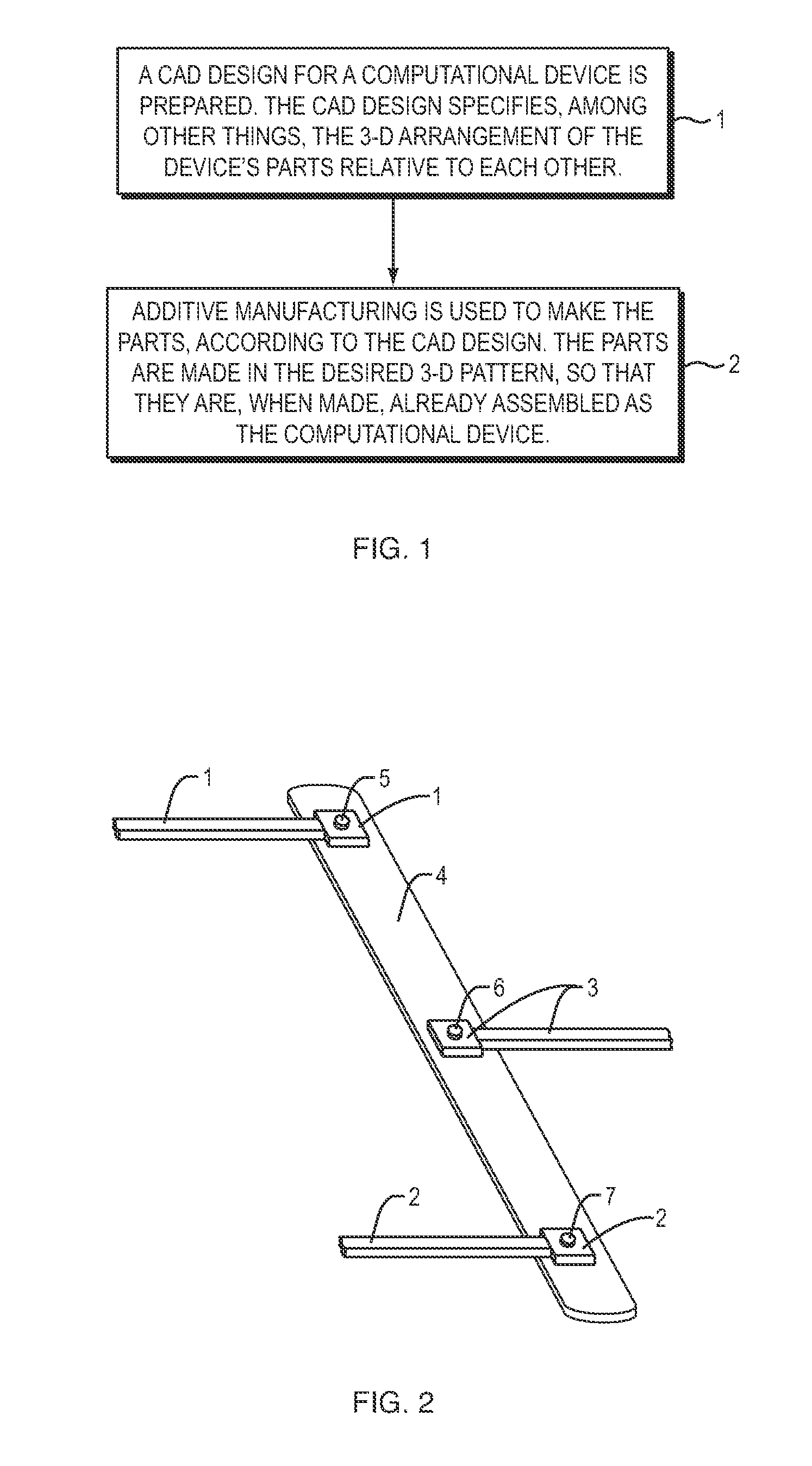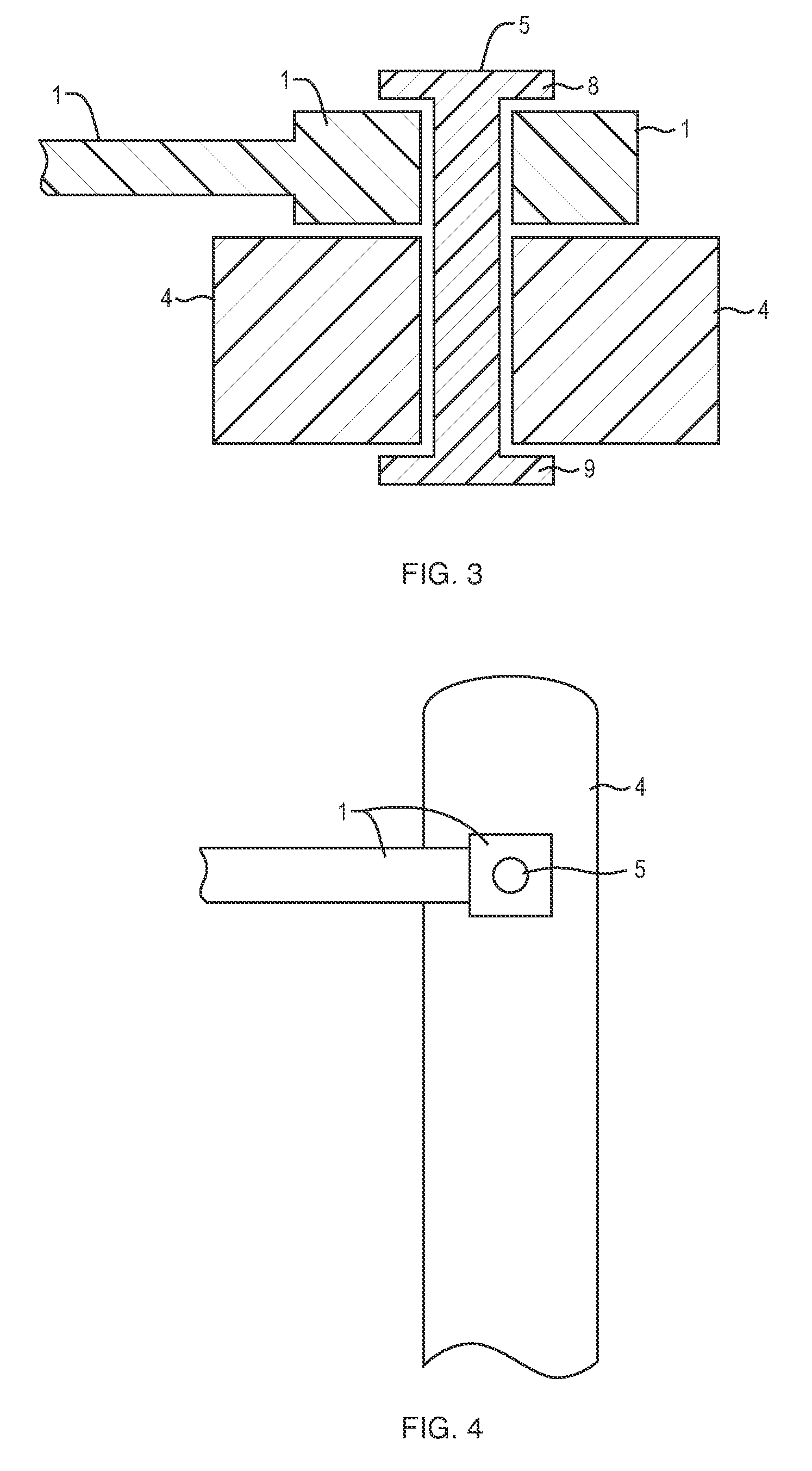Methods and Apparatus for Manufacturing a Computer Without Assembly
a technology of assembly and computer, applied in the field of computation devices, can solve the problems of high labor intensity, high labor intensity, and high labor intensity, and achieve the effect of high-complex computations
- Summary
- Abstract
- Description
- Claims
- Application Information
AI Technical Summary
Benefits of technology
Problems solved by technology
Method used
Image
Examples
Embodiment Construction
[0015]According to principles of this invention, a mechanical computation device may be manufactured without assembly. Put differently, the separate step of assembly is no longer needed. Advantageously, in many cases, this would dramatically reduce the expense and time required for manufacture.
[0016]FIG. 1 shows steps of “assembly-less” manufacturing of a computational machine, in an illustrative implementation of this invention. The machine is designed using a CAD (computer-aided design) program 1. The CAD design specifies the shape of each of the components of the machine. It also specifies the three-dimensional arrangement of the components relative to each other, in which the components are to be manufactured. Additive manufacturing is used to make components of the machine, according to the CAD design 2. The components are made in the desired three dimensional pattern, so that they are, when made, already assembled as a computational machine.
[0017]FIG. 2 shows a perspective vie...
PUM
| Property | Measurement | Unit |
|---|---|---|
| mechanical computer | aaaaa | aaaaa |
| mechanical computational | aaaaa | aaaaa |
| physical states | aaaaa | aaaaa |
Abstract
Description
Claims
Application Information
 Login to View More
Login to View More - R&D
- Intellectual Property
- Life Sciences
- Materials
- Tech Scout
- Unparalleled Data Quality
- Higher Quality Content
- 60% Fewer Hallucinations
Browse by: Latest US Patents, China's latest patents, Technical Efficacy Thesaurus, Application Domain, Technology Topic, Popular Technical Reports.
© 2025 PatSnap. All rights reserved.Legal|Privacy policy|Modern Slavery Act Transparency Statement|Sitemap|About US| Contact US: help@patsnap.com



